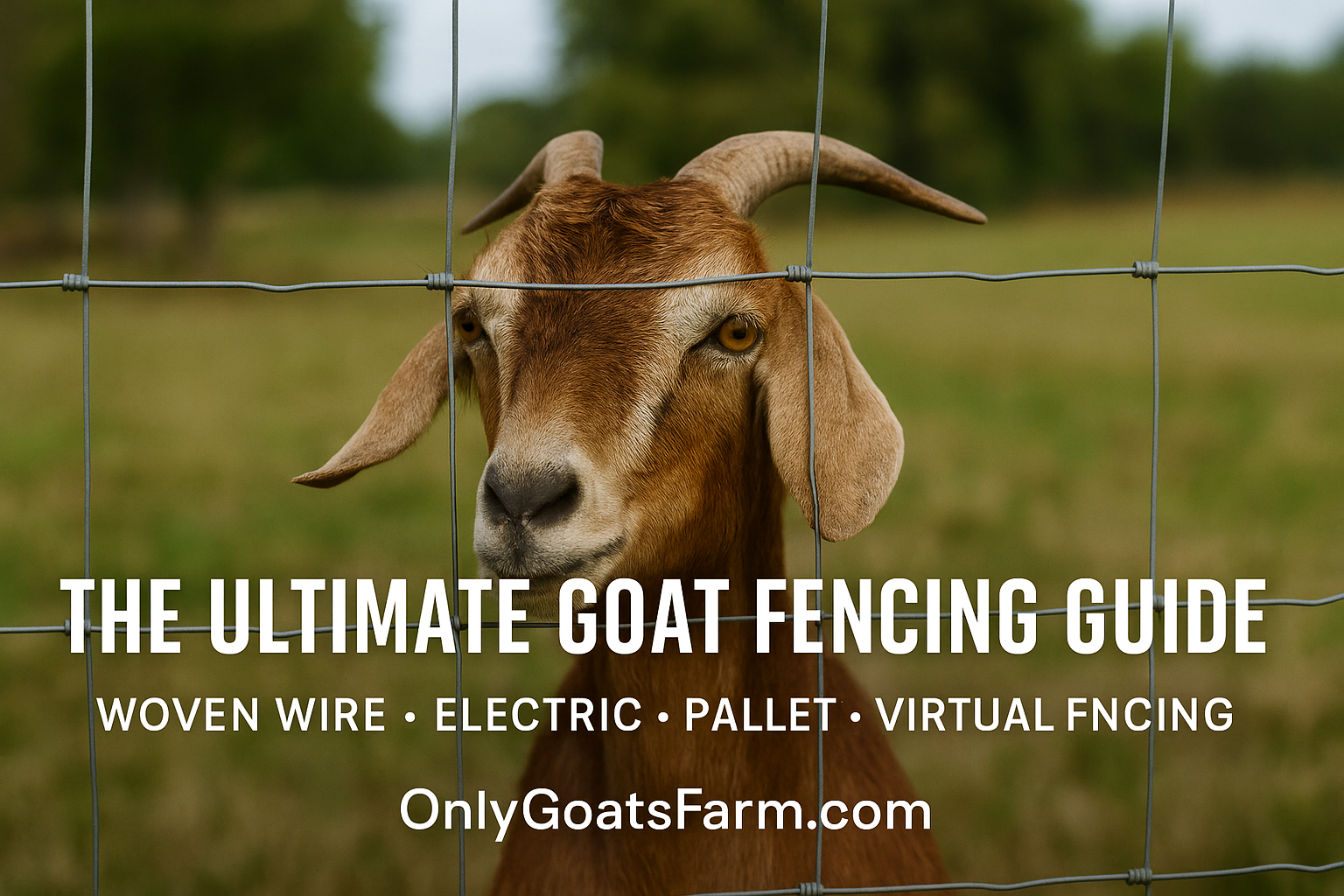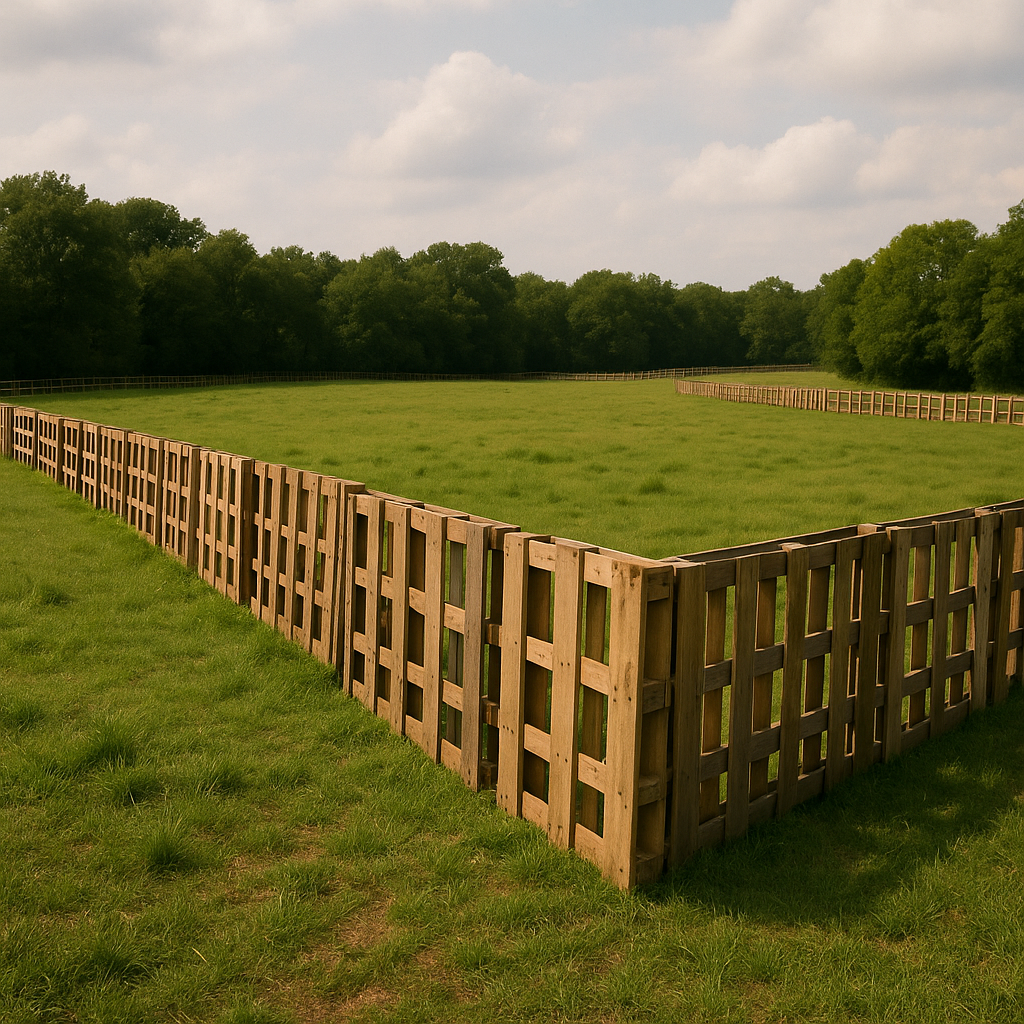Your cart is currently empty!

The Ultimate Guide to Fencing Options for Goats (Yes, Even the Escape Artists)
Goats are delightful, hilarious, and surprisingly brilliant creatures. But if there’s one thing every goat owner agrees on, it’s this: keeping them where you want them is a full-time job.
Whether you have a small homestead herd or a large pasture-based operation, fencing goats requires strategy, patience, and often a sense of humor. Today, let’s break down the most popular fencing options—traditional and modern—so you can figure out what’s best for your farm.
Why Is Goat Fencing So Challenging?
Before we look at solutions, it helps to understand why goats are notoriously hard to contain:
- They Climb. Goats can scale or lean on fences, especially if there’s a ledge or cross-brace to give them a foothold.
- They Push. A goat will lean, rub, and test any weak spot in a fence until it gives way.
- They Jump. Some breeds can clear 4–5 feet in a single bound.
- They Think. Goats remember weak points, learn from each other, and will keep testing boundaries.
In short, a fence that works fine for sheep or cattle may be no match for determined goats.
Traditional Fencing Options for Goats
Let’s start with tried-and-true fencing styles:
1. Woven Wire Fencing
Woven wire (field fence) is one of the most common options. Look for 4″x4″ or smaller mesh to prevent goats from sticking their heads through—and getting stuck.
Pros:
✅ Strong and long-lasting
✅ Good for horned goats
✅ Keeps predators out
Cons:
❌ Can sag over time if not properly stretched
❌ Goats can climb if they find leverage
Tip: Install with sturdy posts and add an electric wire along the top or 6 inches inside to discourage leaning and climbing.
2. Pallet Fencing
Pallet fencing uses recycled wooden pallets attached to posts to create an affordable barrier.
Pros:
✅ Very budget-friendly
✅ Easy to source materials
✅ Quick to install for small areas
Cons:
❌ Not as durable long-term
❌ Goats may climb or chew pallets
Pallet fences can work well for temporary pens or small enclosures when secured firmly.

3. Electric Fencing
Electric fencing can be used alone or as a supplement to woven wire.
Pros:
✅ Teaches respect for the fence
✅ Portable systems available
✅ Relatively cost-effective
Cons:
❌ Power failures can mean instant freedom
❌ Needs regular maintenance (weeds can ground out the charge)
Electric fencing works best when goats have already been trained to respect it and when pastures are rotated frequently.
3. Cattle or Livestock Panels
These are heavy-duty welded panels, often 16 feet long and 50 inches high.
Pros:
✅ Extremely durable
✅ No stretching required
✅ Easy to install
Cons:
❌ More expensive per foot
❌ Heavy to move
Panels are a great option for kidding pens, temporary enclosures, or high-pressure areas where goats are prone to escape.
Virtual Fencing: The NoFence System
Technology has finally caught up to goat shenanigans. NoFence is a GPS-based virtual fencing system designed for grazing animals, including goats.

How It Works:
- Each goat wears a collar with GPS and a speaker.
- You set your “fence” boundaries using an app.
- When a goat approaches the boundary, it hears a warning sound.
- If it continues, it receives a mild electric pulse.
Pros:
✅ No physical fencing needed
✅ Easy to adjust grazing areas
✅ Great for rotational grazing or conservation grazing
Cons:
❌ Not legal in all countries or states (check local regulations)
❌ Requires good cellular coverage and regular charging
❌ Initial investment is higher than traditional fencing
Goat owners using NoFence report excellent results once goats learn the audio cues. If you’re interested, they also have a Refer a Farmer program: existing users can refer other farmers to get a discount on their collars. If you want a referral, email me at contact@onlygoatsfarm.com and I’ll gladly send you one. However, the learning curve (and sometimes the upfront cost) can be a barrier.
Fence-In vs. Fence-Out Laws & Virtual Fencing
In the United States, fencing laws generally fall into two categories: fence-in and fence-out. Most states, including New York, require livestock owners to physically contain their animals. Virtual fencing systems like NoFence are not yet legally recognized as a “lawful fence” in most states. Even if you use GPS collars successfully, you could still be liable if your goats wander off and cause damage. If you are considering virtual fencing, check your local laws carefully and consider maintaining a physical fence along property lines.
Tips for Success No Matter What Fence You Choose
- Height matters. Aim for at least 4–5 feet high. Some goats can jump lower fences easily.
- Secure the bottom. Goats will try to crawl under. Use tension wire or electric wire low to the ground.
- Inspect regularly. Goats will test for weakness every day. Repair issues before they learn they can escape.
- Train young goats early. Goats learn fence boundaries as kids, which saves you headaches later.
- Combine systems if needed. Sometimes the best solution is woven wire + electric + visual barriers.
Final Thoughts
Fencing goats is rarely a one-size-fits-all solution. What works for your neighbor may not work for you. Whether you prefer the reliability of welded wire or the innovation of NoFence virtual fencing, the most important thing is to stay one step ahead of your clever herd.
And remember—if you come outside and find your goats standing on the hood of your truck…you’re not alone.
Want to learn more about goat management and fencing options? Leave a comment below or reach out—I’m always happy to share tips and lessons learned (sometimes the hard way).
If you’d like to go deeper into how virtual fencing works, check out my other article: Virtual Fencing for Goats: Why It Works and How to Get Started.

Leave a Reply